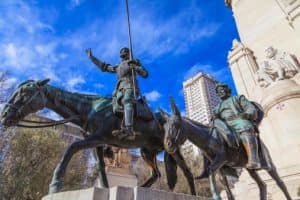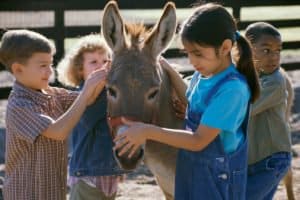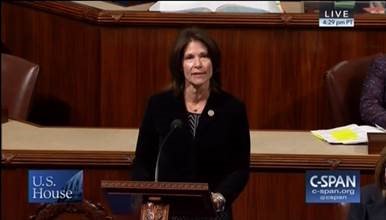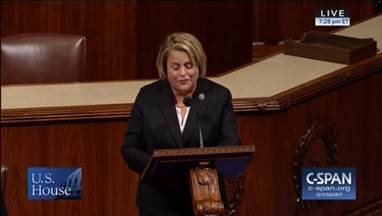 Lina Sun provides a rationale for integrating peace education into the English curriculum through graphic novels
Lina Sun provides a rationale for integrating peace education into the English curriculum through graphic novels
Graphic novels, which tell real and fictional stories using a combination of words and images, are often sophisticated and involve intriguing topics. In the past two decades, the graphic novel medium has been coming into its own. This medium has to be considered as “not the visual equivalent of prose narrative or a static version of a film,” but rather “their own thing: a medium with its own devices, its own innovators” (Wolk, 2007, p. 14). As such, as both narrative and cultural production, the medium of the graphic novel warrants our careful attention and critical analysis.
There has been an increasing interest in teaching with graphic novels to promote literacy (e.g., Gorman, 2003; Schwarz, 2002). A pedagogy of multiliteracies using graphic novels can enhance reading engagement and achievement, reinforcing students’ senses of their identities as readers who are learners and thinkers (Guthrie, 2004). However, there is scant mention of how such multimodal texts can be used for fostering students’ critical literacies and promoting peace education in the English Learner (EL) classroom.
This article provides a rationale for integrating peace education into the EL curriculum and examples of methodological approaches to helping post-secondary teachers use graphic novels as a powerful tool to cultivate students’ critical thinking abilities and a disposition for peace and democracy.
Graphic novels
A graphic novel is an original book-length, fiction or nonfiction story produced in the style of a comic book (Chun, 2009). Here, I am concerned with original book-length stories in graphic novels, allowing creators to present longer complex narratives and mature themes, which is not possible with shorter comic books. Graphic novels provide ample opportunities for students of all ages—especially English learners—to interact with highly engaging, multimodal texts of numerous genres.
The use of graphic novels and comics to support language learning in the EL classroom is not a new concept. Using graphic novels in the classroom contextualizes the target language in ways that help students learn how to use language correctly. Wright (1979) argues that comics provide visual support for learners’ construction of meaning during reading, and suggested incorporating comics into writing activities with these students.
English learners often face formidable barriers in a written text without any accompanying visual context. Cary (2004) suggests that graphic novels as visually supported texts provide comprehensible input and lower the affective filter for second language readers. Moreover, within the context of an EL classroom, critical literacy is an important element in a student’s journey towards acquiring the academic literacy necessary for success in school (Cummins, 2001). Norton and Vanderheyden (2004) stated, “For learners struggling to understand academic texts in a second language, the comic book represents an exciting opportunity to engage with text from a position of strength rather than weakness” (p. 218). This statement is important in that it eschews the deficit model in favor of a perspective that values diversity and burgeoning bilingualism and biliteracy as strengths. Beyond the instructional considerations previously mentioned, the substantive content of certain graphic novels is particularly appropriate for EL learners. For example, works that center on themes of social inequalities and social justice, like Maus I and II (Spiegelman, 1973, 1986), Pride of Bagdad (Vaughan & Henrichon, 2006), and Pitch Black (Landowne & Horton, 2008). These works are accessible to even high-intermediate EL learners and can help them engage in critical discussions in ways that are not always possible with text-only content, due to their scaffolding of textual meanings through rich visual modes of representation. Thus, the teaching of critical literacy can take place while students develop literacy skills through their engagement with these texts.
A rationale for integrating peace
education in EFL curriculum
In developing an integrative theory of peace education, Danesh (2006) observes that even today “most peoples of the world live with conflict-oriented worldviews, whether ethically, religiously, or environmentally based” (p. 239). Johnson and Johnson (2005) define the aim of peace education as helping individuals resolve conflicts without violence, and maintain harmonious relationships through providing them with the needed information, attitudes, values, and behavioral competences. Peace education also presumes that human beings “have an active propensity toward goodness and human cooperation and are inclined toward benign values and behavior” (Synott, 2005, p. 9).
Language learners throughout the world face enormous cultural transformations as old order changes and so-called developing nations increase their economic power and military might. These changes often cause reactionary responses to the new and uncertain conditions they bring, as seen in the inter-ethnic conflict in Serbia and the numerous civil wars in Africa and Asia. In the U. S., these conflicts are reflected in gang violence in cities and towns. However, peace education is not limited only to the topic of war and peace. Wenden (1991) states, “Comprehensive peace education is a response to the violence that pervades our relationships with one another and with the natural world.
It seeks to bring to light the values that underlie the social systems that maintain relationships of violence and to consider more cooperative alternatives” (p. 154). Harris (2004) reviewed the theoretical roots of peace education and classified it into five different types, which include international education, human rights education, development education, environmental education, and conflict resolution education. Opotow, Gerson, and Woodside (2005) defined four key areas of peace education:
Education for coexistence that stresses diversity education, tolerance, sharing, collaborating, and awareness of stereotypes.
Education for human rights that gives priority to learning about killing, genocide, rape, torture, violation resulting from racism, ethnicity, religion, or gender, as well as the study of the Universal Declaration of Human Rights.
Education for gender equality that focuses on violence experienced by women and traditions.
Education for environmentalism that emphasizes environmentally protective attitudes, positions and behavior, learning about pollution, overuse of resources, and destruction.
Our students will need to be able to deal with these issues (racism, unjust distribution of wealth, prejudice, environmental degradation, war and conflict, etc) using strategies that require intercultural communication because these issues cross national boundaries and need international cooperation. They need to be aware of the cultural similarities/commonalities that draw us together as human beings. And, they need to be able to resolve conflict using cooperation and mutual respect. If real social change is going to take place for a more tolerant and peaceful world order, it will begin with helping young learners think critically about their world. I believe that peace education, a dynamic collaborative process by which the learners begin to take responsibility for dealing with the problems they face using the tools of cooperation, tolerance and communication, offers the learner the possibility of responding to the issues of survival and human enrichment. Peace education allows learners to make positive contributions not only to the local community but to the broader international community as well by promoting cross-cultural communication and understanding. It is for this reason that EL instructors have a critical role to play in promoting, organizing, and practicing peace education in classrooms.
A pedagogical approach to teaching about conflicts, wars and peace
Before any attempt at Peace Education, the instructor needs to prepare materials and plan objectives. The objectives should be flexible enough to meet the changing needs of the learners. Approaches can be matched to reflect student interest and time availability on the part of the instructor. The methodological approaches can be explored in Banks (1993) and Renner (1994).
Basically, the instructor can choose to add activities to the existing curriculum through a Contributions Approach in which an article is read, a video is watched, or a discussion game is used in connection with a holiday or event. For example, activities concerning human rights can be added to syllabus in December for Human Rights Day. This approach allows the instructor to show how individuals or groups have contributed or are contributing to our world and offers learners basic information in addition to references for follow-up. The Additive Approach is a little more complicated. Using the existing curriculum, the instructor prepares an addendum to it on a specific question or group of questions. These are included with the standard curriculum and do very little to change the overall approach in teaching. The Transformative Approach changes how syllabus is presented in the classroom. Attention is paid to the content of course books from the points of view of direct and overt racism, sexism, cultural superiority, violence, and real-life skill development of conflict resolution, persuasion and consensus building. Finally, the most complicated model, but the richest in terms of student autonomy, is the Social Action Approach. In this approach, syllabus is completely designed by learner-instructor interaction. Students choose a group of questions they want to study. Then through independent study and application of language skills, they work at resolving the various aspects of the problems posed in each question. This requires a good deal of work on the part of the language instructor who must prepare a variety of activities, evaluate for content and language acquisition, provide resources and support for the students in their study, and be able to draw it all together in the end. The following is an example of mixed pedagogical approach to teaching about conflicts, wars and peace where the instructor encourages learner autonomy and independent learning.
Teaching and learning about conflicts and wars often means exploring complex—and sometimes frightening—challenges like nuclear weapons, atomic bombs, military action, disarmament, revolution, liberation movements, terrorism, and international relations. These subjects often emerge in the study of history and politics, where building understanding about peace and conflict is an important goal for many local and national communities. Although people disagree about whether war is inevitable, conflict is a fact of life. Many individuals and groups believe that schools are among the institutions that share a responsibility for helping citizens learn how to manage conflict so that people can live together peacefully—not only on a global scale, but in personal and classroom interactions. Literacy teachers should encourage students to develop the knowledge, understanding, skills, and attitudes that they need in order to create a better and more peaceful world.
Though global conflicts are often in the news, worldwide deaths from battle have actually decreased significantly since the 1950s, in part because major powers have not been at war for decades. New democracies are emerging, increased economic interdependence makes the costs of war much higher, and international institutions are playing important roles in negotiating peace agreements. A highly networked world is also expanding opportunities for learning, connecting, and exploring both our diversity and common humanity.
In spite of these hopeful trends, the number of armed conflicts within fragile states, regional upsurges in violence, and terrorism are all causes of concern. Armed conflicts can be caused by many factors, such as economic disparities, battles over resources, cultural disputes, or quests for political power. Conflict is most likely to occur in countries that do not have consistent government or open trade, that have high infant mortality rates, and where weapons are easily available. When armed conflicts come to an end and peace agreements are signed, the international community struggles to rebuild war-ravaged states, which often face weak economic and political systems, crime, violence and poverty. In some areas, armed conflict is a feature of everyday life; children are sometimes used as soldiers or may be victims of other war crimes.
Throughout the world, students moving towards adulthood will eventually grapple with complex, interconnected, 21st century challenges related to peace and conflict. Many issues will have overlapping local, national and global dimensions. Individuals, groups, nations and international organizations will need to work closely together in order to resolve them peacefully. “Leadership today means navigating a larger, more complex set of issues and more complicated relationships,” notes the World Economic Forum, yet it also provides “unique opportunities to develop collaborative solutions on a larger scale.”
“Peace” has no universally accepted definition. Traditionally, peace has been understood as the absence of war (also known as negative peace). The notion of positive peace has been increasingly linked with discussions about big ideas such as justice and equality. Themes related to conflict, war, peace and justice could often be found in religious texts and communities.
People have been asking questions about peace and conflict for a very long time. Sustained inquiry and critical reflection on questions like these help to develop citizens who can take responsible actions that can lead to a more peaceful world.
How can we manage our struggle to share finite resources?
How do we deal with feelings of aggression?
What knowledge, skills and attitudes are important for people who want to be able to contribute to making a better and more peaceful world?
How will we get along together?
What does it mean to have a “just war”?
How does global conflict affect the lives of children?
Can war be a legitimate way to pursue national interests?
Is military intervention justified to protect the innocent, for example, to prevent genocide?
Is war inevitable or is it an obsolete means for resolving conflict?
How do different cultures understand violence?
How are justice, peace, security and development related to one another?
What does peace in my community have to do with peace in the world?
How does conflict connect with resources and human development?
Why does politics sometimes end in war? How is war sometimes avoided?
Some ideas for teaching for peace
Education about peace is generally defined as learning about the institutions and processes that are needed to establish peace, such as human rights law and international treaties. Education for peace, on the other hand, focuses on teaching the skills, attitudes and values that will foster peace.
Here are some ideas for teaching for peace.
Explore ways to promote a “Culture of Peace” for your classroom (one resource to consider is UNESCO’s Declaration on a Culture of Peace). Learning communities can practice skills like these:
Active listening—focus fully on what other people are communicating, suspend judgment, ask questions, reflect on interactions;
Valuing commonalities—celebrate our common humanity, including shared needs for sustenance and safety, but also needs for understanding, social connections, dignity and self-worth;
Fostering compassion—practice empathy and stand up for others in distress;
Appreciating diversity—reflect critically on personal and cultural perspectives, and those of others, in order to understand different beliefs, values, experiences, forms of expression and ways of knowing.
Take advantage of community resources that offer diverse linguistic and cultural perspectives.
Observe the International Day of Peace (21 September) or United Nations Day (24 October).
Use technology to connect and build relationships with people who share other values, attitudes, modes of behavior and ways of life.
Monitor world events and be sensitive to students’ perceptions and concerns about local and global conflict.
In a word, before beginning a peace education process, the instructor must have clear objectives in mind and be able to anticipate learner reactions.
The instructor’s role is to give the learners the tools needed to become self-directed learners, not only in the L2 but also in the broad idea of education. The instructor must also be open to compromise and change within classroom as the students’ ability to think critically is expanded. Learners must be given the opportunity to have a voice in planning curriculum and take an active role in the learning process.
Conclusion
The graphic novel is a relatively recent concept that is highly promising for engaging EL students in critical literacy. Using graphic novels for peace education in the context of the EL classroom is both effective and dynamic.
The format allows students to access the text in various ways beyond what the traditional linear format of print text can offer. It also encourages students to engage in both verbal and visual representations helping them gain deeper understanding.
The inherent ambiguity in the visual/text format of graphic novels opens up possibilities for multiple readings and interpretations of content. Furthermore, graphic novels offer EL learners the possibility to use the target language to communicate the needs of not only the local setting but engage in communication with the global community. It adds a dimension of social consciousness to the curriculum that allows for fostering critical thinking. Graphic novels can be an effective means to hone EL students’ critical literacy skills by integrating peace education into the curriculum.
References
Banks, J. A. (1993). Multicultural education: Issues and perspectives. Needham Heights,
MA: Allyn & Bacon.
Cary, S. (2004). Going graphic: Comics at work in the multilingual classroom. Portsmouth,
NH: Heinemann.
Chun, C. W. (2009). Critical literacies and graphic novels for English-language learners:
Teaching Maus. Journal of Adolescent & Adult Literacy, 53(2), 144-153.
Cummins, J. (2001). Negotiating identities: Education for empowerment in a diverse society
(2nd ed.). Ontario: California Association of Bilingual Education.
Danesh, H. B. (2006). Toward an integrative theory of peace education. Journal of Peace
Education, 3(1), 55-78.
Gorman, M. (2003). Getting graphic! Using graphic novels to promote literacy with preteens and teens. Worthington, OH: Linworth.
Guthrie, J. T. (2004). Teaching for literacy engagement. Journal of Literacy Research, 36(1), 1-30.
Harris, I. M. (2004). Peace education theory. Journal of Peace Education, 1(1), 5-20.
Johnson, D. W., & Johnson, R. T. (2005). Essential components of peace education. Theory into Practice, 44(4), 280-292.
Norton, B., & Vanderheyden, K. (2004). Comic book culture and second language learners.
In B. Norton & K. Toohey (Eds.), Critical pedagogies and language learning (pp. 201-
221). Cambridge, England: Cambridge University Press.
Opotow, S., Gerson, J., & Woodside, S. (2005). From moral exclusion to moral inclusion:
Theory for teaching peace. Theory into Practice, 44(4), 303-318.
Renner, C. E. (1994). Multicultural language learning: Applications in EFL curriculum
development. Perspectives, 2(1), 78-87.
Schwarz, G. E. (2002). Graphic novels for multiple literacies. Journal of Adolescent & Adult Literacy, 46(3), 262-265.
Synott, J. (2005). Peace education as an educational paradigm: Review of a changing field using an old measure. Journal of Peace Education, 2(1), 3-16.
Wenden, A. (1991). Facilitating learning competence: Perspectives on an expanded role for second-language teachers. Canadian Modern Language Review, 41(6), 151-167.
Wolk, D. (2007). Reading comics: How graphic novels work and what they mean.
Cambridge, MA: Da Capo Press.
Wright, G. (1979). The comic book: A forgotten medium in the classroom. The Reading
Teacher, 33(2), 158-161.
Key Thinkers in Peace Studies
Elise Boulding (1920-2010), American sociologist whose work focused on the role of family in establishing peace.
Johan Galtung (1930-), Norwegian sociologist whose sometimes controversial ideas about “structural violence” and human rights emphasize transforming conflict by peaceful means.
Immanuel Kant (1724-1804), German philosopher who set forth a number of conditions for establishing “a perpetual peace” including constitutional republics.
Desmond Tutu (1931-), South African activist and religious leader who campaigned against apartheid and championed racial reconciliation. His work has inspired global campaigns for human rights.
Using graphic novels to integrate peace education into critical EL curriculum
Graphic novels like Maus, Barefoot Gen, Palestine, and Persepolis, which feature complex themes on war and its atrocities, current political development, and coming-of-age in a time of revolution, can mediate historical realities with their unique visual narrative styles. These image-text works represent an emerging way of representing social chaos and trauma, and do so in a number of innovative ways. Many EFL learners can imagine and interpret the characters’ experiences that are far removed from their own daily lives. These multimodal texts can be integrated into a critical EFL curriculum for peace education.
For example, the EFL students are able to better understand the horrors of the atomic bomb through the harrowing experiences of the main character in Barefoot Gen, partly because of the artist’s stylization and an authentic narrative about an unimaginable nuclear war. This phenomenon has important implications for students’ engagement with reading graphic novels featuring complex themes because reader “ownership over meaning making is clearly one of the appealing facets of comic book reading” (Norton & Vanderheyden, 2004, p. 211). The following is an example of how teachers can employ a critical multiliteracies approach using Barefoot Gen in the post-secondary EFL classroom for peace education.
Japanese graphic novels, or manga, have certain features that facilitate their use in class, namely their widespread appeal, high artistic quality and ever-increasingly availability in English. Barefoot Gen raises issues of conscience, ethics, civic responsibility, religions, and cultural biases and differences. This particular text is chosen because of its affordability, the seriousness with which it treats the topic, and the opportunities for classroom discussion it provides. Barefoot Gen series is a ten-volume graphic novel that tells the story of a young boy who survives the atomic bombing in war-torn Hiroshima and the immediate aftermath. It is considered one of the most important anti-war manga ever written, with a message of the urgency of compassion and civic responsibility and the strength of hope. Originally this series was published as a serialized comic in a Japanese boy’s manga magazine. It has been translated into more than ten languages throughout the world. The story is closely based on the early life experiences of the author, Keiji Nakazawa, who lived with his family in Hiroshima and experienced the bombing first hand. In the lengthy autobiographical series of Barefoot Gen, Nakazawa created many sub-narratives that showed how domestic Japanese life was affected by militarism, radiation sickness and the U. S. occupation.
This controversial novel raises quite a few concerns as to its anti-war theme. On one hand, Barefoot Gen was once removed from Matsue City school libraries in Japan because it was considered an “ultra-leftist” manga that perpetuated lies and instilled defeatist ideology in the minds of young Japanese. Education, Culture, Sports, Science and Technology Minister Hakubun Shimomura supported the decision, explaining that the manga was harmful to youth with its depictions of violence and chaos in Japan in the 1940-50’s. After tremendous outcry, the Barefoot Gen ban has been overturned. On the other hand, Barefoot Gen relays an informed accounting of Japan’s role in Word War II and is a strong anti-war piece that cannot and should not be silenced. Nakazawa relates a poignant geopolitical perspective of the war, discussing the power of political machines, “divine rule” versus democracy, and the power individual citizens must exercise to secure their rights and uphold their values.
The powerful and unassuming series portrays a large, traditional but complicated Japanese family consisting of a pacifist father, a mother who is nine months pregnant caring for her preschool aged son at home, an older brother that has enlisted in the military to prevent his family from being targeted as “unpatriotic traitors,” another young son who has been evacuated to the countryside (where he faces starvation), and a sister trying to maintain some sense of normalcy by attending grammar school. In Volume One, the story begins in Hiroshima, early August 1945. It establishes the main characters and relays the causes and horrors of the war. We meet Gen, his family friends, and neighbors, and through their interactions, we learn the Emperor’s rationale for war. We also witness the blind support most Japanese showed and their cruel attempts to silence alternate political and social opinions.
Gen’s father, Daikichi is critical of the war and labeled a traitor by their community. His children are beaten and shunned by peers and teachers, Daikichi is jailed and tortured, and merchants refuse to sell them the limited resources and food available. A short time later, the atomic bomb is dropped, we see the nightmarish hell it brought. Victims’ flesh is burned and hanging from their bodies, others are trapped under homes or running from fires, many are maimed and/or dying. The remainder of Volume One reveals how Gen and others find the means and courage to deal with the pain and shame of surviving. The remaining volumes relate life in the aftermath of the war through the eyes of Gen, his family, orphaned friends, and other survivors whose paths cross Gen’s.
Teaching social issues and civic responsibilities
Over the course of the ten volumes, Nakazawa details the bomb’s aftermath from a cultural, political, and humanistic perspective. We learn why Japan went to war and how China and Korea were stripped of their natural and human resources, including the enslavement of those captured. We see that while most Japanese blindly supported the Emperor’s “divine right” and rule, a growing number of people began to question and resist it. We learn the long-term effects of the bomb: limited/contaminated food and water, homelessness, orphans, radiation poisoning and medical/health issues that doctors were equipped to handle, rampant crime, misuse and abuse of drugs and medications, and the crumbling of law and order.
We also witness Japanese social and political reactions after the bombs: burned, sick, and disfigured survivors were ostracized; writing about the atomic bomb was forbidden for many years; the different political parties and the National Police Reserve was used as a strong military arm to keep citizens in check; the rationale and politics of the Korean War; and why America’s role in the war threatened Japan.
Lina Sun received a PhD in Curriculum & Instruction from Saint Louise University, MO, USA. She is currently working and researching at the School of Foreign Languages, China University of Petroleum, Beijing, China. This study is funded by the Science Foundation of CUP (Bejing, 2462015YJRC006) and special research foundation of China English Reading Academy “Reading and Cultural Awareness” (CERA1351108).
 Massachusetts’ Republican Governor Charlie Baker has signed the LOOK Bill into law which will allow the state’s schools to offer bilingual and dual-language education. According to the Department of Elementary and Secondary Education, there are more than 90,000 English language learners (ELLs) in Massachusetts.
Massachusetts’ Republican Governor Charlie Baker has signed the LOOK Bill into law which will allow the state’s schools to offer bilingual and dual-language education. According to the Department of Elementary and Secondary Education, there are more than 90,000 English language learners (ELLs) in Massachusetts.




 Students (and teachers) should take advantage of the many travel deals on offer to see as much as they can of this diverse continent
Students (and teachers) should take advantage of the many travel deals on offer to see as much as they can of this diverse continent Lori Langer de Ramirez uses the world language classroom to broaden students’ knowledge of geography and introduce concepts like social justice
Lori Langer de Ramirez uses the world language classroom to broaden students’ knowledge of geography and introduce concepts like social justice Exposure to diversity in the classroom tends to be associated with better collaboration skills., according to the first
Exposure to diversity in the classroom tends to be associated with better collaboration skills., according to the first  Lina Sun provides a rationale for integrating peace education into the English curriculum through graphic novels
Lina Sun provides a rationale for integrating peace education into the English curriculum through graphic novels Qatar Foundation International (QFI) has launched the Arabic Honor Society (AHS) to recognize top-performing high school students studying Arabic language and Arab culture.
Qatar Foundation International (QFI) has launched the Arabic Honor Society (AHS) to recognize top-performing high school students studying Arabic language and Arab culture. Students can now apply to be the representative of Spain and the campaign Study in Spain (SiS) in their university for the next round of the Student Ambassador Program.
Students can now apply to be the representative of Spain and the campaign Study in Spain (SiS) in their university for the next round of the Student Ambassador Program.


